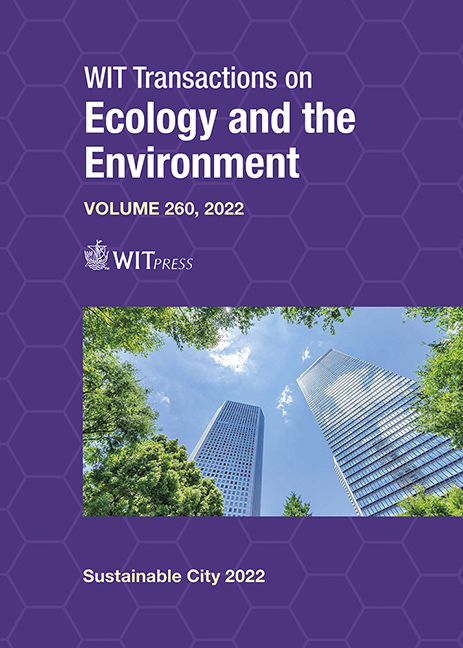BUILDING SUSTAINABILITY ASSESSMENT BASED ON MATERIALS USED: CASE STUDIES IN LISBON, PORTUGAL
Price
Free (open access)
Transaction
Volume
260
Pages
13
Page Range
53 - 65
Published
2022
Paper DOI
10.2495/SC220051
Copyright
Author(s)
JORGE T. RIBEIRO, ANA BARRETO
Abstract
Nowadays, sustainability is one of the main objectives of the world, also shared by the construction sector. However, despite the calls toward construction sustainability and its benefits, the project design decisions are often based only on the economic point of view, which is useful for the building cost but underestimates the materials’ environmental impacts. The subject of this paper is the buildings’ sustainability assessment, concerning the environmental impact of materials used, in two stages of the building life cycle: (i) building construction; and (ii) building occupation. In order to define the sustainability degree of the buildings, correspondence analysis as discriminant analysis was used to establish a numerical scale that allows comparing the buildings in relative terms. The buildings are scored and ranked through this scale. The Parque das Nações (Nation’s Park) area, Lisbon, was chosen because it was designed to be an example of sustainable urban planning, with concerns for the preservation and conservation of resources. The methodology developed, which allows synthesizing in a single numerical value the buildings’ sustainability, was tested in 30 buildings, with promising and intelligible results for non-professionals and professionals. In general, residential buildings reveal high sustainability than office buildings in the construction stage. In the occupation stage, both types of buildings reveal sustainability scores more similar.
Keywords
building sustainability, sustainable materials, barycentric discrimination, Parque das Nações





